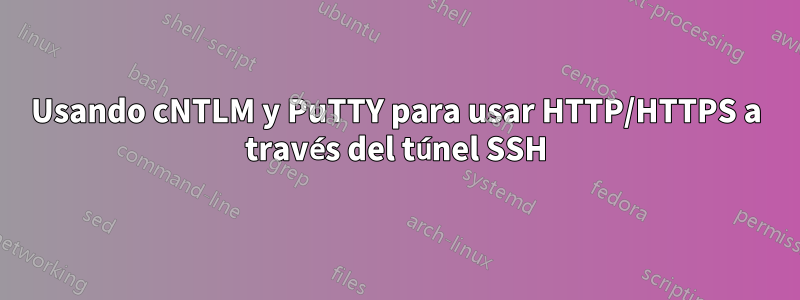
Esa es brevemente la topología de red a la que me enfrento:
My Workstation -> Transparent proxy (NTLM auth; only allows HTTPS port 443) -> Internet ->
My PC at home (with SSH server listening on port 443, and with DDNS, so I have a domain)
Ejecuto cNTLM como servicio, creo que lo configuré correctamente; de hecho, usando PuTTY, logro conectarme exitosamente al servidor SSH de mi hogar, evitando la restricción de proxy de esta manera.
Estas son brevemente las configuraciones de cNTLM y PuTTY (estoy en un entorno Windows):
Masilla:
Session
Host Name: my domain address (of my PC at home)
Connection type: SSH
Port: 443
Connection -> proxy
Proxy type: HTTP
Proxy hostname: localhost
Port: (the port cNTLM is listening at, for example 5555)
DNS lookup: Auto
Username/password: (my workstation user/pass)
cNTLM:
username: myworkstation username
domain: myworkstation domain
PassLM : myworkstation hashed pass
PassNT : myworkstation hashed pass
PassNTLMv2 : myworkstation hashed pass
Proxy: the proxy address with the port it is listening
Listen: the port cNTLM is listening, in this example 5555
Como dije, puedo conectarme exitosamente a mi servidor SSH. ¿Qué pasa si ahora quiero utilizar el túnel SSH recién creado para navegar por Internet?
Estoy seguro de que debo configurar las opciones del túnel, pero ¿debería usar la opción del túnel en el CNTLM.iniarchivo o la opción del túnel PuTTY SSH? Realicé muchos intentos (fallidos), pero claramente me falta algo, por lo que agradecería cualquier ayuda.
Respuesta1
Logré hacer un túnel SSH de un puerto local al puerto 443 remoto y luego especificar el puerto local en las opciones de proxy del navegador. Esa era la parte que me faltaba, ¡espero que pueda ser útil para alguien!


